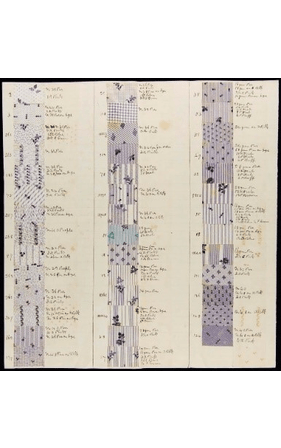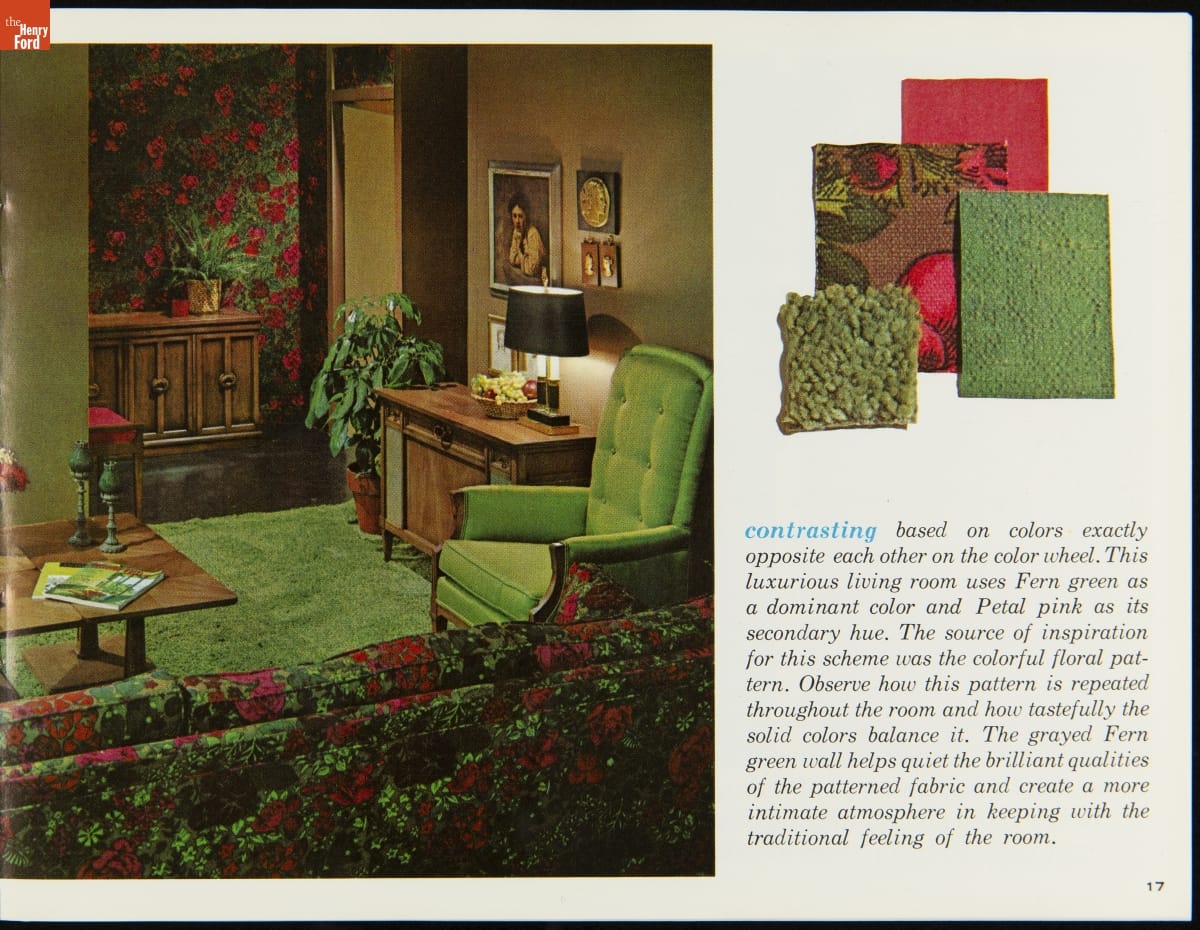"Sampling" the Past: Fabrics from America's Textile Mills
In 2017, The Henry Ford acquired a significant collection of materials from the American Textile History Museum (ATHM) when financial challenges forced that organization to close its doors. Founded in 1960, ATHM was located in Lowell, Massachusetts, a city key to the story of the Industrial Revolution and to the American textile industry. For decades, ATHM gathered and interpreted a superb collection of textile machinery and tools, clothing and textiles, and an extensive collection of archival materials. The Henry Ford was among the many museums, libraries, and other organizations to which ATHM's collections were transferred.
The Henry Ford acquired textile machinery, clothing, and textiles, as well as archival material that includes approximately 3,000 cubic feet of printed materials and fabric samples from various textile manufacturers, dating from the early 1800s into the mid-to-late 1900s. As part of the William Davidson Foundation Initiative for Entrepreneurship, The Henry Ford has digitized many sample books, as well as product literature, from the archival material within the ATHM collection.
So, what is a sample book? Textile manufacturing companies – commonly referred to as mills or print works – kept a record of fabrics produced by the company within a given year or season. These records typically consist of a fabric sample attached to a blank page in a bound book, and are often accompanied by information including pattern name, inventory number, dyestuffs, and in a few cases, the retail company for which the fabric was made.
The pages of these books offer a rich look at the broad range of fabrics produced by an increasingly mechanized textile industry, allowing researchers to see the evolution in textile design, materials, and manufacturing techniques. They also allow a glimpse into the various methods of recordkeeping among the many companies represented in the collection. Finally, the books—and the fabric samples within them—provide us with a broad view into the rich color palate of American textiles of the 1800s and 1900s. This is especially helpful for exploring clothing and textiles in the era before widespread color photography, where our understanding of the period is dulled by black-and-white depictions. The sample books are strikingly beautiful, offering an intriguing glimpse of the evolution of styles and patterns over time.
In addition to the sample books, we had the opportunity to digitize several examples of product literature from the 1900s, including catalogs and brochures. The product literature was used for marketing and sales, rather than as a record of production. These materials offer insight into the fabric and designs available for clothing or domestic use during the 1900s.
Have I piqued your interest? Below are a few favorite items I’ve come across in this collection.
Sample Books
Cocheco Manufacturing Company (Dover, New Hampshire & Lawrence, Massachusetts)

Fabric Samples from the Notebook of Washington Anderton, Color Mixer for Cocheco Print Works, 1876-1877 / THF670738, THF670787, THF670757

Fabric Samples from the Notebook of Washington Anderton, Color Mixer for Cocheco Print Works, November to December 1877 / THF670668, THF670707, THF670697

Sample Book, January 9, 1880 to April 22, 1880 / THF600226
Hamilton Manufacturing Company (Lowell, Massachusetts)

Sample Book, April 9, 1900 to May 27, 1901 / THF600027, THF600141, THF600167
Lancaster Mills (Clinton, Massachusetts)

Sample Book, "36 Inch Klinton Fancies," Fall 1927 / THF299907, THF299924

Sample Book, "Glenkirk," Spring 1928 / THF299970, THF299971
Product Literature
Hellwig Silk Dyeing Company (Philadelphia, Pennsylvania)

Sample Book, "Indanthrene Colors," 1900-1920 / THF299990
Montgomery Ward & Co. (Chicago, Illinois)

Suit Catalog, "Made to Measure All Wool Suits," 1932 / THF600534
I.V. Sedler Company, Inc. (Cincinnati, Ohio)

Catalog, "The Nation's Stylists Present Sedler Frocks," 1934 / THF600502
Carlton Mills, Inc. (New York, New York)

Sales Catalog for Men's Fashion, 1940-1950 / THF670587
Harford Frocks, Inc. (Cincinnati, Ohio)

"Frocks by Harford Frocks, Inc.," 1949 / THF600604
Sears, Roebuck and Company (Chicago, Illinois)

"Sears Decorating Made Easy," 1964 / THF600561
Samantha Johnson is Project Curator for the William Davidson Foundation Initiative for Entrepreneurship at The Henry Ford. Special thanks to Jeanine Head Miller, Curator of Domestic Life at The Henry Ford for sharing her expertise of the textile industry and for reviewing this content.
20th century, 19th century, manufacturing, furnishings, fashion, entrepreneurship, by Samantha Johnson


Facebook Comments